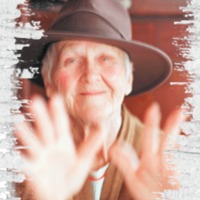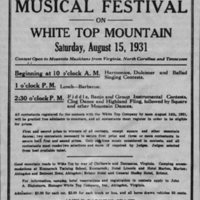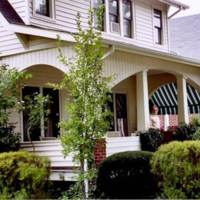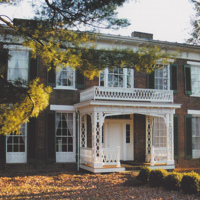Browse Exhibits (4 total)
Making Sense of Lou Crabtree

The purpose of this exhibit is to showcase the literary work of Lou Crabtree, both published and unpublished, using images and excerpts from her writings, notes, and letters, to illustrate the importance of place in her work.
White Top Folk Festival 1931-1939

The White Top Folk Festival grew out of a suggestion made to Abingdon attorney John Blakemore that a fiddler’s contest be held on White Top on the 4th of July. 13 In addition to being an attorney, Blakemore was a well-connected politician and an officer in the White Top Company which owned the mountain. The wife of Blakemore’s cousin John Buchanan, Annabel Morris Buchanan was a member of the Federated Women’s Music Clubs of America and director of the Federation’s folk music section. A gifted musician in her own right, Mrs. Buchanan hosted a weekly Monday Afternoon Music Club in Marion, Virginia and in that capacity had become acquainted with John Powell, a southern classical musician of some distinction. “In addition to being a composer and prominent pianist, Powell lectured, wrote articles, and sponsored associations and festivals designed to promote the preservation of the folk music of the south.” He was also an advocate for the belief that mountain life, and especially the ballads that musicologists
like Cecil Sharp and others had “discovered” in Appalachia a decade earlier, represented the last bastion of Anglo-Saxon purity in a rapidly expanding, increasingly urbanized, and ethnically diverse America.
[All That is Native and Fine, p. 211]
Down the Road: a history of Damascus, VA. in pictures

When she died in 2008, Mrs. Hall’s children, Jack Hall, Eleanor Hutton and Marilou Preston, donated her papers and other effects to the library to be used as an archive for those interested in her life and the life of the community she loved and served for almost 100 years. The online archive features images and some documents. Its narrative structure is based on the text of Mrs. Hall’s History of Damascus, 1793-1950. Additional images and text have been selectively incorporated and credited when applicable. Washington County Public library holds the rights to the online version and administers the physical collection on behalf of the descendants of Louise Fortune Hall
Abingdon Walks

When Abingdon was laid out almost 250 years ago it was in a compact, neat grid. According to Margaret Rogers Davis, by 1789 “the town had three long streets, Main, Water (later Park), and Valley; four cross streets, Tanner, Court, Brewer and Slaughter; two alleys, Chinquepin (now Plum Alley) and Troopers.” The orientation was roughly East-NE/West-SW (following the general direction of the present Norfolk and Western rail line). In their description of the Fields-Penn House, the Society of Architectural Historians note that “this end of town was a vital part of the community, but growth moved east and left it stranded for a time... .” Indeed, looking at a map of Abingdon in 1834 it appears that most growth in the town was east and north of the original plan. Growth in Abingdon in modern times extends down towards and beyond Interstate 81 and Southwest in the direction of Bristol, with Cummings St. as the midpoint. But the basic grid, i.e. The Historic District, is still intact and our walking tour will be largely confined to that portion of town.
The confluence of points of interest in “Abingdon Walks”, the axis which it revolves around, is at the corner of Main and Cummings where Fields-Penn is located with Depot Square and Sinking Spring Cemetery on one side and the majority of the historic sites featured in Nanci King’s Places in Time on the other. Valley St. The Creeper Trail and possible sites of Black’s Fort are nearby and Panicella, and The Muster Grounds are at further remove, with the Urban Pathway loosely tying them all together.
"Fields-Penn House Museum," Anne Carter Lee. SAH Archipedia
Note: "...the home now serves as the Abingdon Visitor Infromation Center and is no longer a house museum.
LocalWiki.org